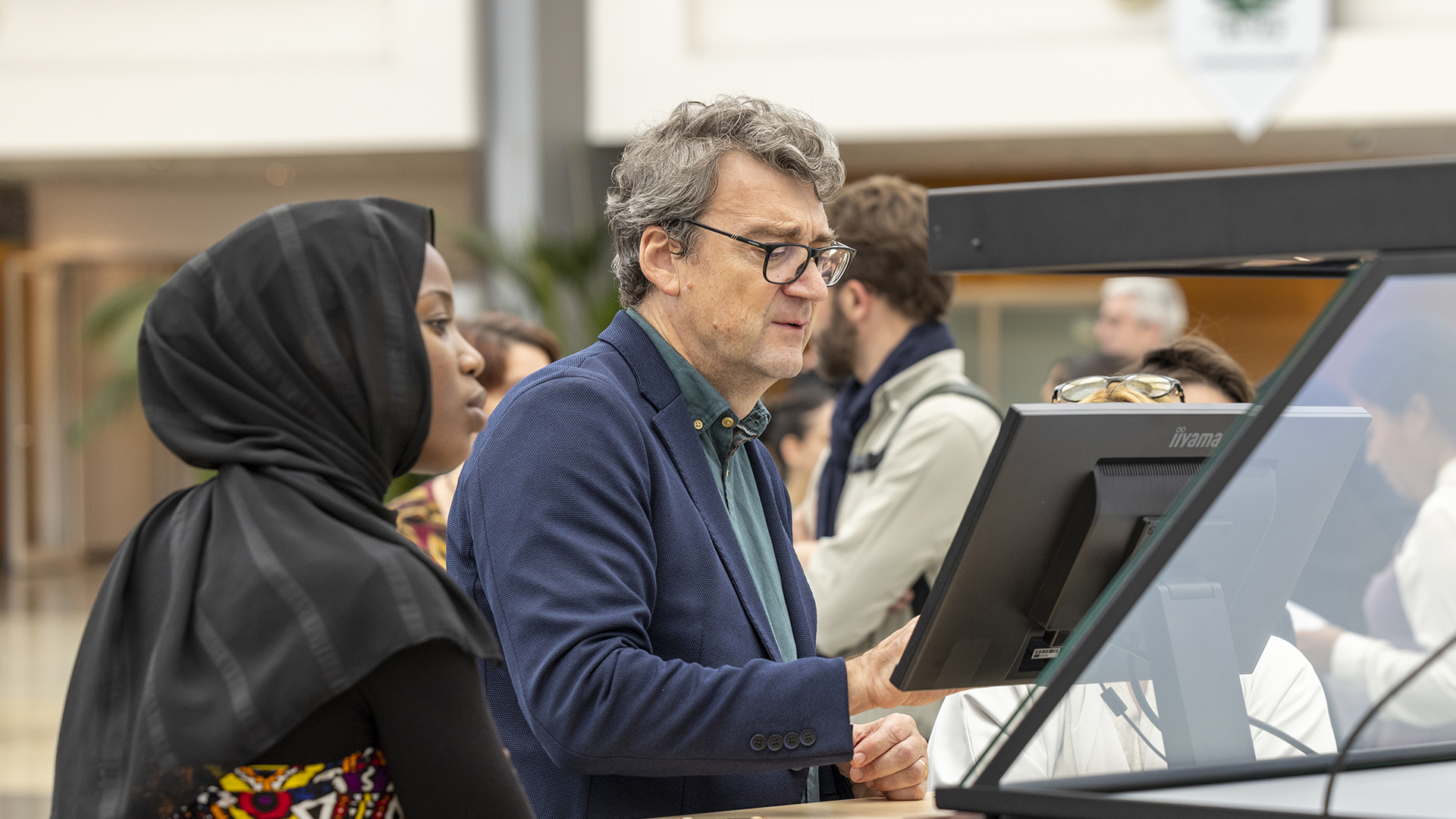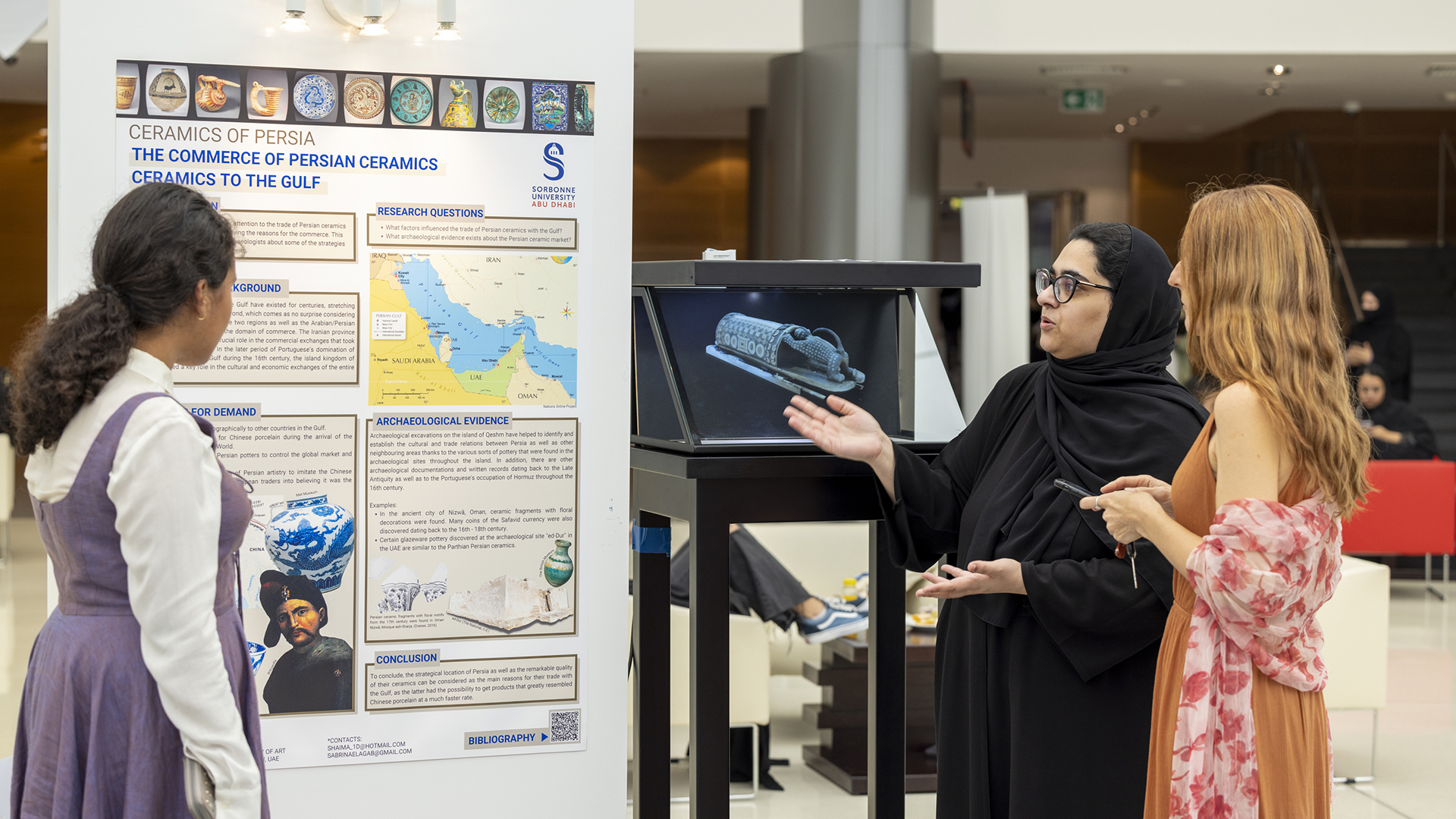eCorpus is used by the Department of History and Art History to facilitate the teaching of these disciplines to undergraduate and master’s students. The objective is twofold: to help students become more autonomous in their presentations and research projects by structuring their work around a 3D representation of an artwork, and to provide the institution with a space for innovation and experimentation in showcasing its own collections and conservation efforts.

March 2022
Sorbonne University Abu Dhabi (SUAD) has acquired three holographic display cases (two small IRIS 22 models and one large IRIS 32 model). This acquisition, made through the company Holusion, aimed to provide teachers and students with a new 3D visualization tool as a teaching aid and/or for research projects.
March 2023
SUAD complemented this initial acquisition by integrating the eCorpus system, implemented as part of a new consortium to enable the manipulation of previously digitized objects within the holographic display cases and to insert information into them.
This very important step for the university allows moving from being a spectator to being an active participant, both in manipulating objects and in the ability to integrate information into them. SUAD was thus able to test the presentation of its data through two fields: Art History, and Science and Engineering, producing content of various types ranging from historical context to microscopic photography. This was an opportunity for SUAD to experiment with the collaborative aspect of eCorpus.

The recent inauguration of an exhibition showcasing student projects on archaeological furniture excavated from digs carried out by SUAD and the DDCR (Dubai Desert Conservation Reserve) allowed testing this new system and presenting the results to a wide audience, including education professionals, museum staff, and students. Their very enthusiastic feedback highlights the importance of this setup both for museum institutions and universities alike.
SUAD plans to strengthen this system within its institution to provide students with a better understanding of the objects they will study. Students from the Department of Art History and Archaeology have already had the opportunity to use these new tools, which have been very intuitive to handle and not time-consuming. The goal now is to fully integrate it into the curriculum and benefit from student feedback.
At the same time, SUAD plans to collaborate with several cultural institutions in the Arabian Peninsula around this new system to share this innovative approach to studying an artwork, which can also serve as a means of mediation: digitizing an object, integrating all the research conducted, sharing it, and promoting it.
We thank OPUS (Observatoire Paris Sorbonne Université), Christophe Moulherat, and Delphine Sylvilay for their contribution to this project, as well as all the partners who made this technological advancement possible in the service of culture and digital heritage. We hope that this progress will encourage new collaborations, research, and discoveries in this ever-evolving field.
February 2024
On the occasion of conferences and an exhibition about the scientific project of Notre-Dame de Paris Cathedral, two eCorpus stations were installed within the institution. One was used to present photogrammetry and laser scanning digitizations carried out by the PLEMO 3D platform, within the André Chastel Center, Faculty of Arts, Sorbonne University. These scenes are accessible in the Notre-Dame de Paris collection.